WSG's "Sixteen Plus Sixteen" pairs gallery members & their selected artists
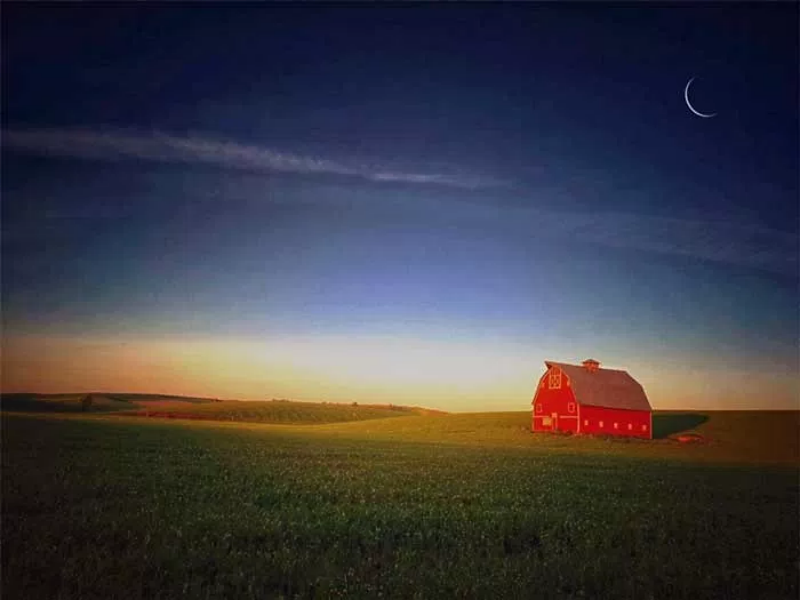
The annual Sixteen Plus Sixteen features the work of WSG gallery members and their chosen guests. The 16 invited artists’ works are then shown alongside the works of WSG’s 16 represented artists.
As stated on WSG's website, the showing is “always an exciting art-filled time with lots of vibrant new pieces.” The gallery certainly represents many vibrant works, representing a diversity in practice and media. The show includes paintings, sculpture, ceramics, fabric, photography, books, and much more.
Margaret Condon Taylor's photographs capture a lost Seoul
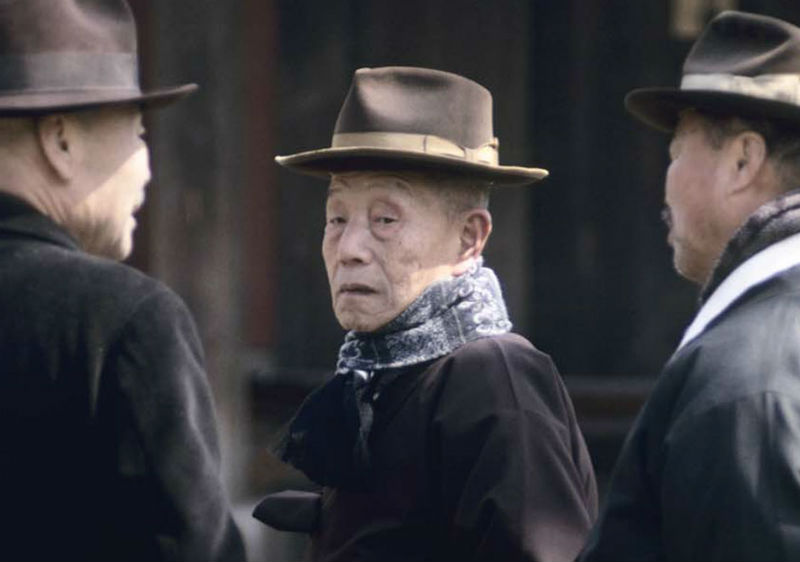
Margaret Condon Taylor is not a typical photographer. The University of Michigan alumna gained a Ph.D. in psychology, which she currently still practices. So, in the spirit of Taylor's day job, the viewer may feel the need to ask probing questions about the photographs on display in An Accidental Photographer: Seoul 1969 at U-M's Institute for the Humanities Osterman Common Room, such as: What do they tell us? And why is the project “accidental”?
Although the title of the exhibition raises questions, one does not need to look far for answers.
Contemporary History: Ann Arbor Art Center's 95th "All Media Exhibition"
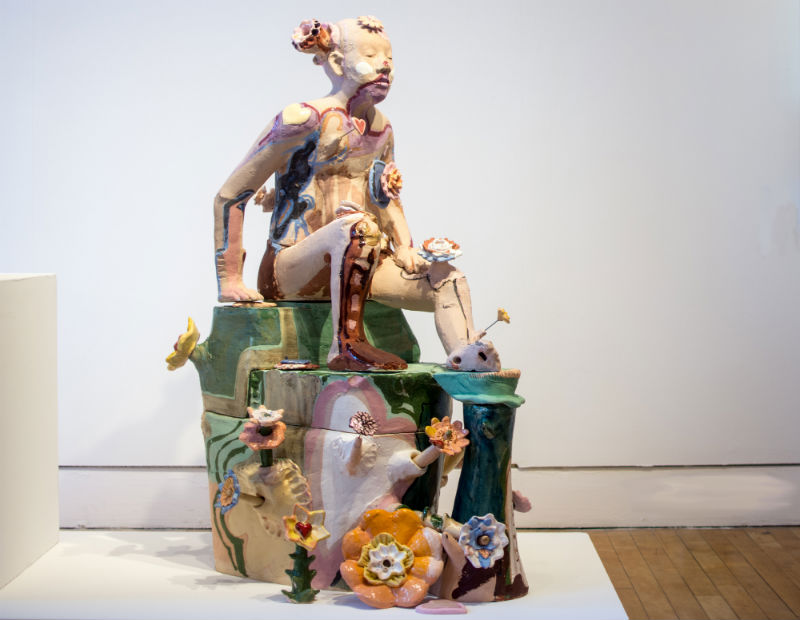
The 95th All Media Exhibition marks the continuation of a tradition established in 1922 when the Ann Arbor Art Center was known as the Ann Arbor Art Association. There are 29 artists’ works on display through January 13, with a large portion from Michigan and others from surrounding areas including Illinois, Indiana, New York, Minnesota, Ohio, Pennsylvania, and Wisconsin. The Ann Arbor Art Center’s previous shows have illustrated its commitment to exhibiting an extensive variety of contemporary artwork, and the All Media show is no exception.
Valerie Hegarty's "American Berserk" exhibit deconstructs the gloss of U.S. history

Brooklyn-based artist Valerie Hegarty is known for site-specific installations. For her American Berserk exhibit in the University of Michigan’s Institute for the Humanities Gallery, Hegarty created a rotting watermelon -- which isn't to say she saw the space and thought, "Hmm, this room screams, 'EXPIRED FRUIT.'" Rather, Amanda Krugliak, curator for Institute for the Humanities, suggests Hegarty’s works “speak to the morass, the schism, the cracked facade, and fruit rotten, the flowers drooping.” The tradition of representing fruit on the brink of putrefaction is long established.
Krugliak has also included a variety of sculptures by Hegarty that engage with American iconography, calling it into question and raising suspicions about the stories America tells about its past.
U-M’s event announcement suggests Hegarty has consistently engaged with “fundamental themes of American history and particularly the legacy of 19th-century American art, addressing topics such as colonization, slavery, Manifest Destiny, nationalism and environmental degradation.” Hegarty frequently employs images of George Washington, a symbol of American values, and an excellent example of how American history often glosses over unsavory aspects of its founding fathers’ lives.
The interesting thing about Hegarty’s vision, as Krugliak points out, is that “each work feels steeped in a brew of our collective history, an archive of distorted, iconic American imagery.” While Hegarty’s work represents this familiar American imagery, the icon is always altered. Krugliak gives the example of this alteration, stating that Hegarty’s “seashells and clipper ships begin to morph, strangely animat'ed, sliding to the floor.” The warped seashells are reminiscent of Salvador Dali's work, but as Krugliak suggests, these works are in context of “modern-day folly.”
In her artist’s statement, Hegarty labels the installation process a form of “reverse archaeology,” in which the gallery is transformed by adding and subtracting layers of paint, paper, and epoxy to create a “material memory of a space.” Material memory in relation to space within a museum or gallery setting is already implicit: it is shifting constantly. Hegarty’s frequent employment of stylistic references to early American art in her installations frankly reference and destroy the illusion of reality portrayed by museums, particularly in display practices of American art.

Hegarty employs a multitude of materials in the creation of her sculptures and installations. She has used ceramics (much of the work in the Humanities Gallery is ceramic), wood, paper, and epoxy. One of Hegarty’s signatures is playing with dimensionality and the discrepancy between a flat surface and a 3-D or 2-D object. This generally starts with the idea of the “flat” painting being projected forward into space, sliding off the wall, or apparently melting. In the Humanities’ Gallery, the most striking example of Hegarty’s signature installations is the jutting, 3-D, site-specific sculpture representing George Washington. George is also found represented in modestly sized ceramic topiaries, in which his features are distorted yet recognizable.
Hegarty's title of the show, American Berserk, is a nod to Philip Roth’s Pulitzer Prize-winning novel, American Pastoral. Roth defines the Berserk as the inverse of the American pastoral ideology. This installation is a “restaging” of the original show that contained these works, held at Burning in Water Gallery in New York, 2016. On her website, many of the works can be seen as they were in the 2016 installation. These images on her website illustrate the differences in each site-specific work. For example, in both 2016 and 2017 she created the George Washington painting, which a tree branch extending from the wall is impaling. The branch simultaneously punctures the “canvas” and becomes an extended nose, referencing Pinocchio, the liar, suggesting the iconic founding father’s wrongdoings.
Additionally, the installation at the University of Michigan’s Humanities Gallery differs from the original in that it appears more dramatic, the branches appearing to have done more damage to the wall. Though the artist’s intervention in the space is not as grand as some of her past installations, the work of art disrupts the normative gallery space. This, paired with the unsettling nature of the works themselves, creates a critique not only of American history and early American art but the practices continuously embraced by museums in displaying these works of art.
Elizabeth Smith is an AADL staff member and is interested in art history and visual culture.
Valerie Hegarty's "American Berserk" is on display at University of Michigan’s Institute for the Humanities Gallery, 202 S. Thayer, through Dec. 21. Gallery hours are Monday through Friday 9 am to 5 pm. Free. For more information, visit ns.umich.edu.
Pop-Up Patriarchy: "WORLD LEADERS" exhibition by Chanel Von Habsburg-Lothringen

The University of Michigan Institute for the Humanities’ pop-up exhibition WORLD LEADERS showcases the work of photographer Chanel Von Habsburg-Lothringen. She has an MFA in photography from Cranbrook Academy of Art and a BA in social science and history of art from the University of Michigan. Currently based in Los Angeles, Von Habsburg-Lothringen has curated projects at Los Angeles Museum of Art, Detroit Design Festival, the Mike Kelley Mobile Homestead, and Cranbrook Museum of Art.
The exhibit consists of one large photograph, printed on a vinyl banner, and hung on the back wall of the common room, adjacent to three small, framed still-life photographs of presumably designer clothing. The exhibition announcement states that Von Habsburg-Lothringen’s newest series, Conditions, “continues to examine the position of the woman in neo-liberal society as both object and agent. It reflects on the slippage between aspiration and desperation in the face of the vanishing American Dream.”
trustArt Gallery's "Studio Works" exhibit encourages community engagement
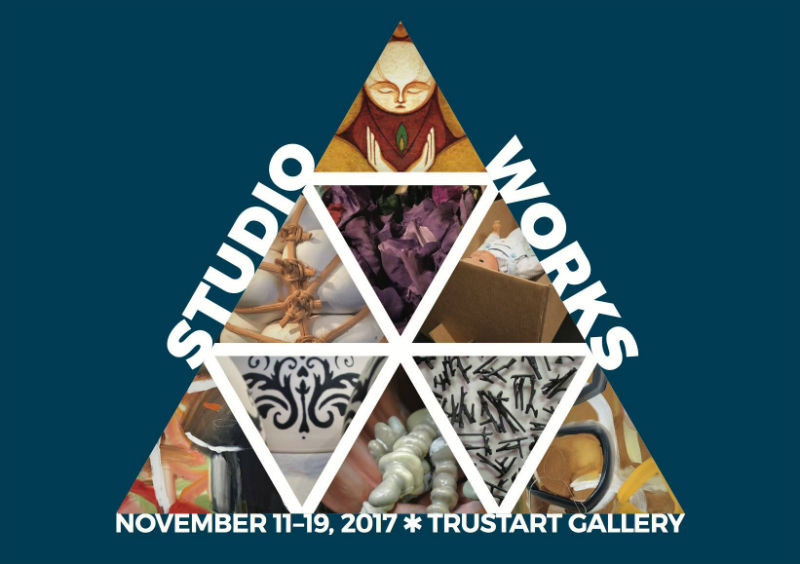
The trustArt Gallery's Studio Works exhibition (Nov. 11-19) will display multi-media works by artists and designers who work in rented studios at the venue. The exhibit features works by Larry Cressman, Liz Davis, Elizabeth Barick Fall, Rose E. Gomez, Barbara Hohmann, Allen Samuels, Laura Shope, and Lissie Williams, and it also offers an intimate look into the studio space and how it relates to the artists’ practices and everyday environments.
In addition to the more common gallery exhibition, the added opportunity to see the artists’ studios and working spaces aims to create community engagement with the arts, according to trustArt Gallery's statement: “We are connected through our location and environment as we pass through the shared open space of our gallery: it provides an opportunity to intersect; to cross paths; a place for our studio works to be shared and reflected upon; a chance to interact with each other and the community.”
The opening-up of studios to the community will allow for many people to interact with art and art making in an expanded capacity. It allows unique insight into aspects of the creative process and creates a chance for discussion and dialogue between the artist and the community.
Featured artists/designers:
Ann Arbor Art Center's "Millennial Pink" explores a generation through color

What, exactly, is “millennial pink”?
This term is now used to identify the aesthetic of an entire generation, the often-reviled millennial. This generation is defined as being born between 1981 and 2001. Whether you love or hate millennials, the color pink, or the term “millennial pink,” this exhibition delves into many issues at the forefront of contemporary cultural discussion.
The Millennial Pink exhibition is comprised of multi-media arts and will be on display at the Ann Arbor Art Center through Nov. 4. Artists in the show explore a variety of themes, including “gender identity, pop culture, sexuality, politics, and shades of Pantone pink.”
Technological Delineation: "Moving Image: Portraiture" at UMMA

Moving Image: Portraiture at the University of Michigan Museum of Art aims to address portraiture through the lens of contemporary media. As the third and final component of a series drawn from the Borusan Contemporary collection in Istanbul, including Moving Image: Landscape and Moving Image: Performance, each of the three artists included in this small exhibition uses technology to convey complex ideas, not only about the history of portraiture and representation but how technology can change our ideas of what constitutes portraiture.
Fashion, Forward: "Looking Back: 20th Century Dress From the Historic Costume Collection"
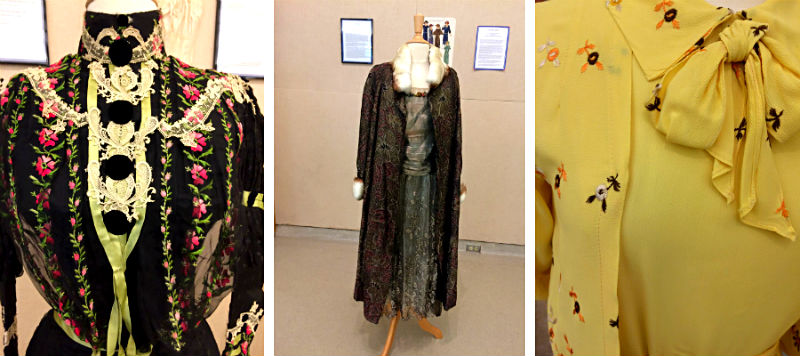
The idea that fashion is cyclical, and that “certain silhouettes repeat themselves with minor changes,” is not a new one. It is, however, an interesting starting point for thinking about articles of clothing throughout 20th century in America.
The exhibit Looking Back: 20th Century Dress From the Historic Costume Collection, curated by Jessica Hahn, can be seen at the Duderstadt Center at University of Michigan through October 6. The show displays a full range of garments from 1900 to 1999. The show posits that despite the use and re-use of certain styles and silhouettes throughout time, the textiles used and their production styles, as well as attitudes toward dress itself, changed drastically. The 20th century was an era in which fashion changed at a faster rate than ever before. There were a number of factors that contributed to this shift that are explored through the inclusion of objects and wall text.
Shifting Ideals: "GLOSS: Modeling Beauty" at UMMA
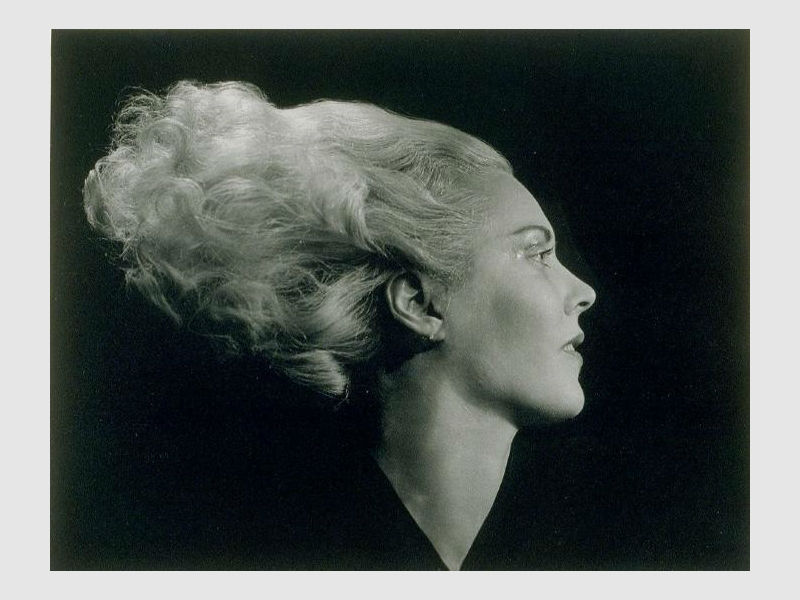
GLOSS: Modeling Beauty is a thoughtfully curated exhibition that focuses on the impact of fashion photography on the history of photography. The show explores “the shifting ideals of female beauty” in American and European visual culture starting in the 1920s with the work of Edward Steichen. The exhibition examines not only fashion photography and images from advertising campaigns but features documentary photography by Elliott Erwitt, Joel Meyerowitz, and Ralph Gibson, captured images of women and mannequins in urban environments. Furthermore, artists James Van Der Zee, Eduardo Paolozzi, and Nikki S. Lee “employ the visual strategies of traditional fashion photography, while offering alternative narratives to mainstream notions of female beauty.”


































